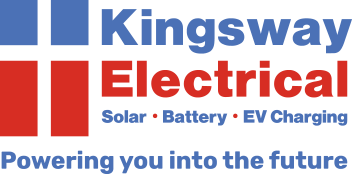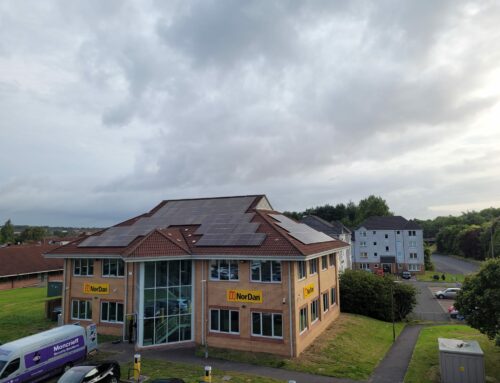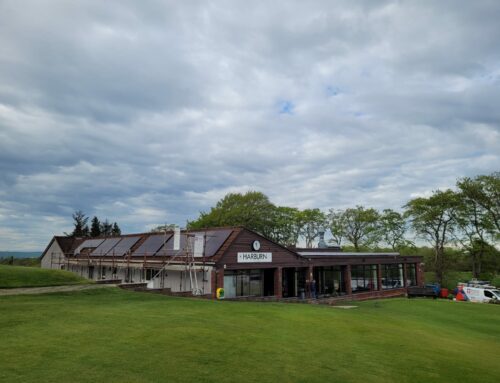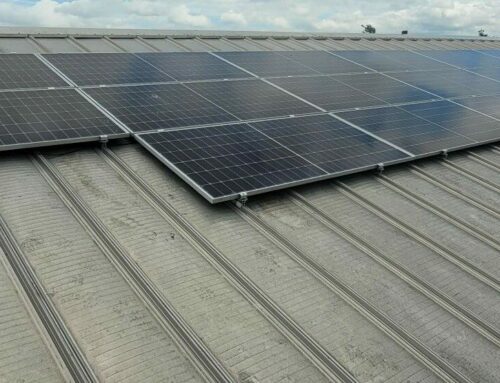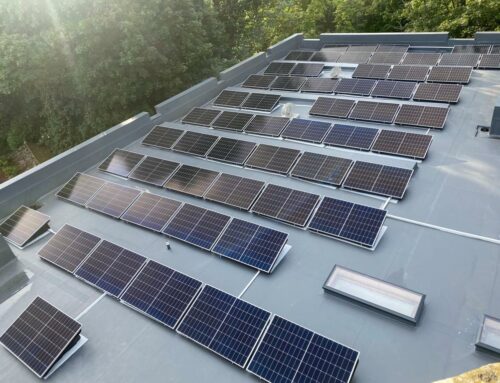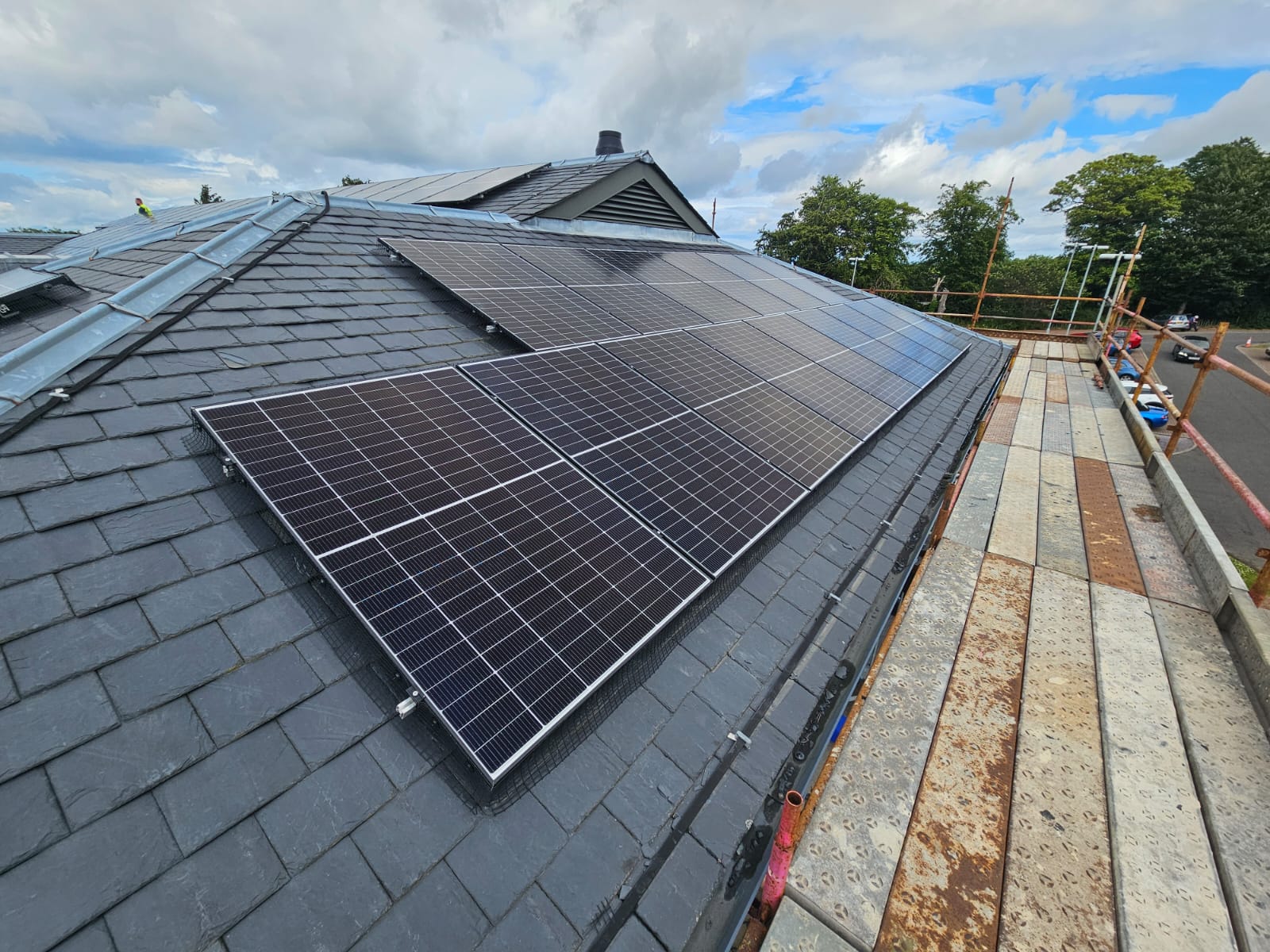
Baberton Golf Club
Baberton Golf Club
Staying innovative at Baberton Golf Course: Installation of solar PV
Baberton golf club’s approach to staying innovative
Steeped in history, Baberton Golf Course has always been innovative, being home of the first steel-shafted clubs in the world. Situated in West Edinburgh with a 6129-yard, par 69, eighteen hole parkland layout, the clubhouse caters for members with changing room facilities, dining/function area and casual bar. Always updating, Baberton decided to tender for solar pv to be installed on the clubhouse roof area.
After a successful tender process, Kingsway Electrical was selected to carry out the Solar project. We designed, supplied, and installed a comprehensive solar energy system. One of the key technical decisions Baberton Golf Club made in their solar PV installation was the use of two 30kW inverters. By opting for two inverters, the club ensured greater flexibility and reliability in their energy production.
Baberton Golf Club’s commitment to maximising the effectiveness of their solar PV system is evident in their innovative use of roof space. Traditionally, solar panels are installed on south-facing roofs in the Northern Hemisphere to capture the maximum amount of sunlight throughout the day. However, Baberton took a bold step by also utilising their north-facing roof, demonstrating a keen understanding of their specific location and solar potential.
While a north-facing installation may not receive as much direct sunlight as a south-facing one, the decision to use this space was driven by the desire to maximize the total area available for solar panels. By using both south and north-facing roofs, Baberton Golf Club has increased the overall capacity of their solar PV system, ensuring that they capture as much renewable energy as possible.
The use of two inverters and the maximisation of roof space ensure that the system operates at peak efficiency, further enhancing these savings. Over time, these savings will accumulate, providing the club with the financial flexibility to invest in other areas of its operations.
Key takeaways
- Utilisation of available roof space to harness renewable energy to supply the building.
- 147 solar panels for a combined output of 65.42 KW.
- Estimated Annual Energy Generation of 48,474 KWh.
- Estimated Annual Self-consumption of 23.3%.
- Annual estimated bill reduction of 25%.
- Annual Co2 savings of 12.3 tons equivalent to 74 Trees.
